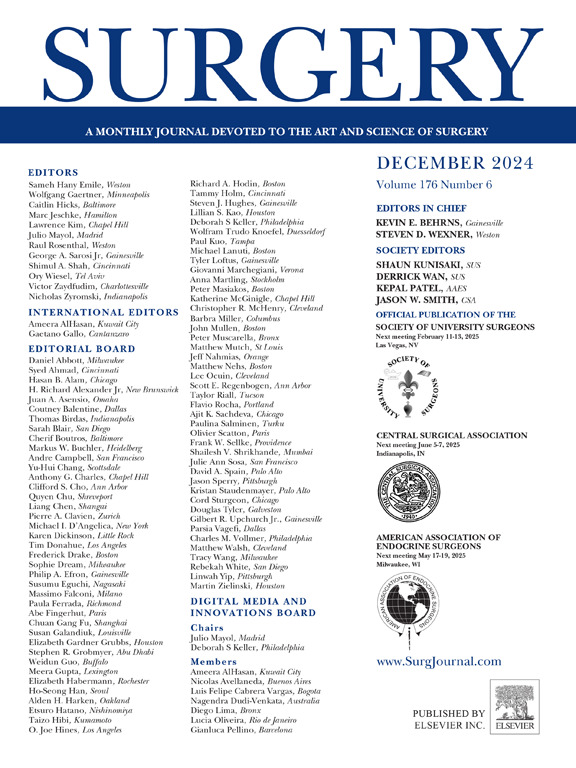The efficacy of postoperative visits for detecting complications in pediatric patients
IF 3.2
2区 医学
Q1 SURGERY
引用次数: 0
Abstract
Background
Long wait times for new patient visits can delay necessary care and lead to patient dissatisfaction. Minimizing nonessential scheduled follow-up visits may increase surgeons’ availability to see new patients. Postoperative clinic visits are typically scheduled to detect complications. However, there is limited data on how often postoperative complications are diagnosed during scheduled follow-up visits versus during other encounters. We examined whether complications were routinely detected during scheduled follow-up visits after low-risk procedures in healthy children.
Methods
A single-center observational study was performed using Current Procedural Terminology/International Classification of Diseases codes and a chart review. Our cohort included patients who underwent appendectomy, inguinal hernia repair, pyloromyotomy, or circumcision between 2016 and 2023. A scheduled follow-up visit was defined as a postoperative clinic visit with a surgeon that was made ≥3 days before the clinic visit date and within 8 weeks of surgery. A complication that was diagnosed at an encounter other than the scheduled follow-up visit was defined as an “uncaptured complication.” The primary exposure was provider scheduled follow-up visit rate, and the primary outcome was rate of uncaptured complications.
Results
In total, 2,676 patients were included. Surgeon scheduled follow-up visit rate was categorized as low versus high based on the mean scheduled follow-up visit rate of 63%. The median rate of uncaptured complications for physicians with both a low scheduled follow-up visit rate and a high scheduled follow-up visit was 1.4% (P = .99). Even on adjusted analysis, high scheduled follow-up visit rate was not protective against uncaptured complications. Only procedure type and younger age were predictive of incidence of uncaptured complications.
Conclusion
Routine scheduled follow-up visits after low-risk operations in healthy children do not effectively capture postoperative complications. Implementing a culture of follow-up as needed could increase surgeon availability to see new patients in ambulatory clinics.
求助全文
约1分钟内获得全文
求助全文
来源期刊

Surgery
医学-外科
CiteScore
5.40
自引率
5.30%
发文量
687
审稿时长
64 days
期刊介绍:
For 66 years, Surgery has published practical, authoritative information about procedures, clinical advances, and major trends shaping general surgery. Each issue features original scientific contributions and clinical reports. Peer-reviewed articles cover topics in oncology, trauma, gastrointestinal, vascular, and transplantation surgery. The journal also publishes papers from the meetings of its sponsoring societies, the Society of University Surgeons, the Central Surgical Association, and the American Association of Endocrine Surgeons.
 求助内容:
求助内容: 应助结果提醒方式:
应助结果提醒方式:


